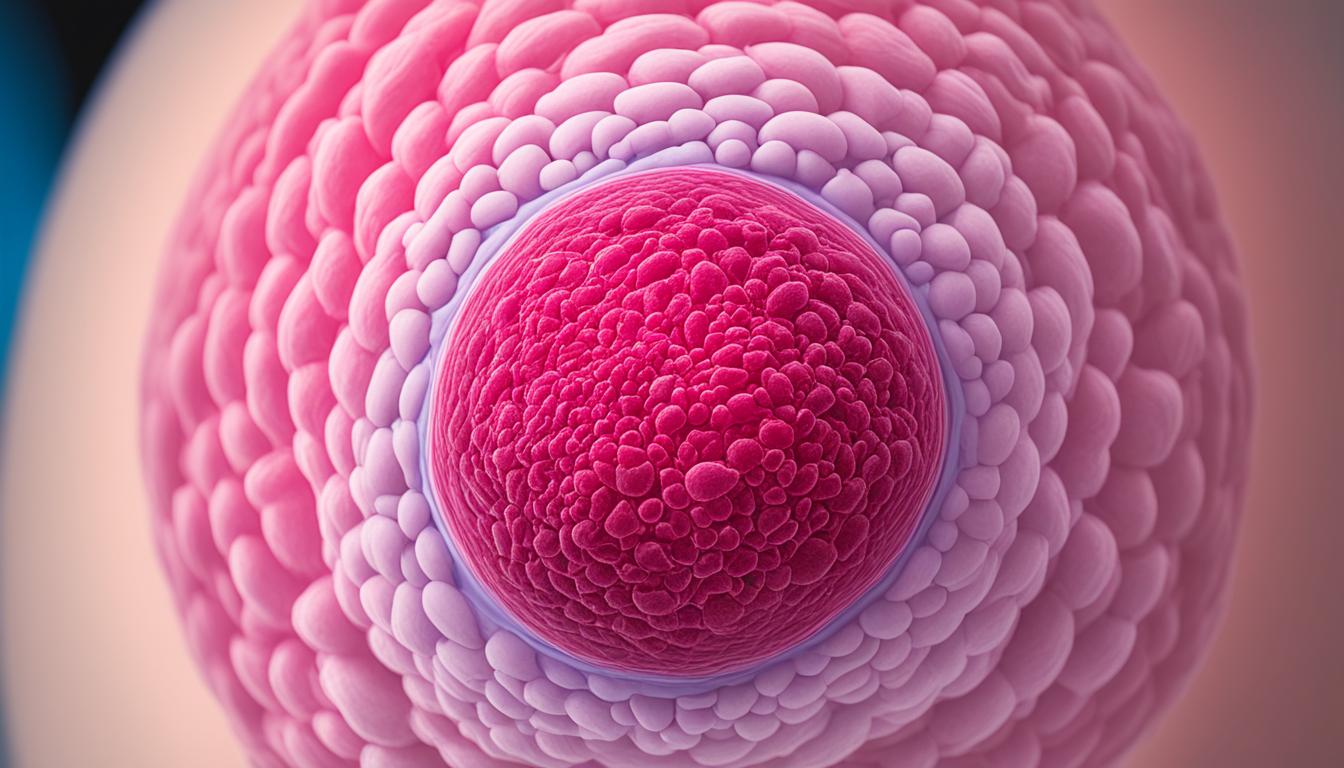A hydrocele causes a painless swelling in the scrotum. This happens when fluid builds up around the testicle. It’s often seen in newborn boys and goes away on its own in the first year. For older males, it might happen due to an injury or infection. Doctors can easily diagnose it. Sometimes, treatment isn’t needed.
Key Takeaways:
- Hydrocele is a painless swelling in the scrotum due to fluid accumulation.
- It is common in newborn males and often disappears without treatment within the first year of life.
- In older males, hydrocele can result from injury or infection.
- Diagnosis of hydrocele is usually straightforward.
- Treatment may not be necessary for hydroceles that do not cause discomfort or other complications.
Symptoms and Causes of Hydrocele
A hydrocele causes the scrotum to enlarge without pain. This swelling can happen on one or both sides. It usually doesn’t hurt but might be uncomfortable if the swelling is large. In men, it might feel like the scrotum is heavy. The effects of hydrocele can change based on how severe it is and individual differences.
In babies, hydroceles form when the inguinal ring doesn’t shut like it should. This allows fluid in the scrotum, creating a hydrocele. For adults, many things can lead to hydroceles. This includes injuries, infections, or other health issues. Figuring out the cause is key to getting the right treatment.
Common Symptoms of Hydrocele:
- Enlargement of the scrotum
- Painless swelling on one or both sides
- Discomfort or heaviness in the scrotum
Causes of Hydrocele:
The causes of hydrocele include:
- Failure of the inguinal ring to close properly in babies
- Injury to the scrotum
- Infections like epididymitis or orchitis
- Tumors or growths in the testicles
- Certain medical conditions or surgeries that affect scrotum blood or lymph flow
If you notice hydrocele symptoms or worry about your scrotum swelling, see a doctor. They can give you the right diagnosis and treatment.
Diagnosis and Treatment of Hydrocele
Diagnosing hydrocele is the first step in finding the right treatment. The process starts with a detailed physical exam. A healthcare provider looks over and gently feels the scrotum. This helps them see if there’s swelling and to what degree. It also lets them tell hydrocele apart from other issues, like hernias or tumors.
A thorough physical check is usually enough. But sometimes, extra tests are needed for a full view. For example, transillumination lets doctors shine a light through the scrotum. This can show if the swelling is from fluid. Ultrasound is another test that might be done. It gives a clear picture of the hydrocele and helps rule out other problems.
Hydrocele treatment varies based on the swelling’s size and how much it bothers the person. Many hydroceles get better on their own and don’t need treatment. But it’s key to check with a doctor regularly. This makes sure it’s not getting worse or leading to other issues.
If the hydrocele is big or painful, there are treatments available. One option is hydrocele surgery. In this procedure, the extra fluid is drained. The sac around the testicle might be fixed to stop it from happening again. This surgery often takes place in a clinic or hospital, with general anesthesia.
Needle aspiration is another choice. It’s a small procedure where a doctor uses a needle to take out the fluid. Although this can help for a little while, the hydrocele might come back.
Deciding on surgery or aspiration requires a good talk with a healthcare provider. They should consider your unique situation and what you prefer. Keeping up with your doctor for check-ups is also very important. This is to watch how the hydrocele is doing and to address any new problems or worries.
Hydrocele Treatment Options:
- Observation and monitoring without intervention
- Hydrocele surgery (hydrocelectomy) to remove the excess fluid and repair the sac
- Needle aspiration to drain the fluid temporarily
All treatment choices have their pros and cons. It’s vital to talk things over with your doctor. This way, you can find the best plan based on your situation and needs.
Stem Cell Therapy for Hydrocele Relief
For those looking for a modern hydrocele treatment, stem cell therapy brings hope. This treatment involves injecting stem cells right into the hydrocele site. It aims to reduce swelling and boost the healing of tissues.
Stem cell therapy shows promise in making hydroceles smaller. It also helps relieve the symptoms. This approach is seen as a good alternative to major surgery because it’s minimally invasive.
It’s especially good for those not fit for traditional surgery or preferring different treatments. Stem cell therapy uses stem cells’ power to heal. It can help reduce scrotal swelling and might enhance the life quality of hydrocele sufferers.

